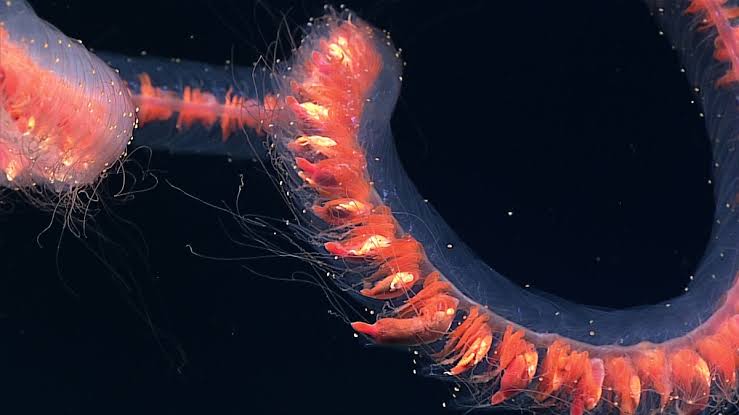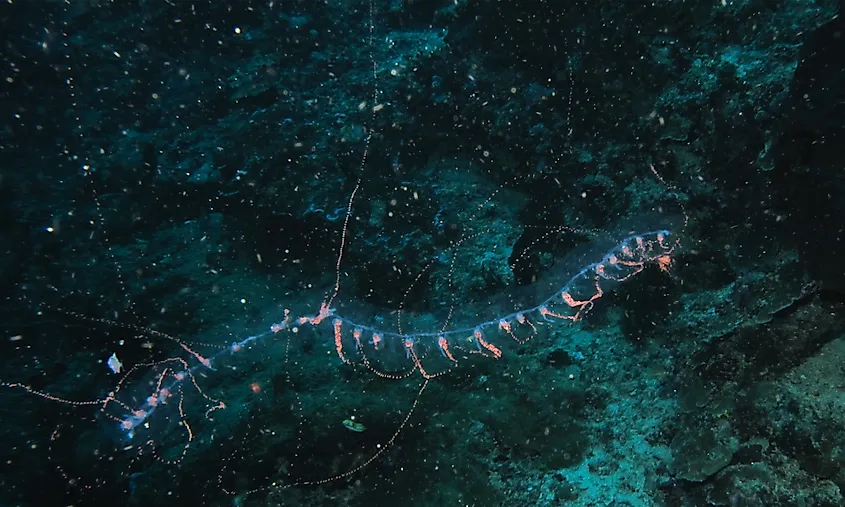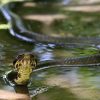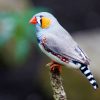
Once the longest ocean or sea creatures are being mentioned many quickly think of the blue whale or the colossal great white sharks. Some might picture the sweeping tentacles of the lion’s mane jellyfish, often deemed one of the longest creatures on Earth.
However, none of the aforementioned is the right one, not even the jellyfish. The Siphonophore is the world’s longest ocean creature. The Siphonophore is a mysterious, deep-sea colonial organism that can stretch across unbelievable distances.
Siphonophores are not single animals in the traditional sense; they’re colonial organisms. Each siphonophore is composed of numerous individual units, known as zooids. Although related to jellyfish and corals, siphonophores differ because each zooid within the colony performs specialized tasks—feeding, reproduction, or defence—yet cannot survive independently. Together, these zooids form a larger, integrated “super-organism” drifting through the ocean.
Most siphonophores live in the deep ocean where there is no light other than the light emitted by other organisms. Even some siphonophores can emit light.
At first glance, siphonophores are delicate, sometimes transparent, and can appear ribbon-like as they move. Their bodies can include a variety of shapes and colours depending on the species. In many instances, they showcase glowing or bioluminescent patches, creating a mesmerizing display in the deep sea. When fully extended, they can become astonishingly long reaching maximum lengths of 130 feet (40 m), sometimes forming spiral or looped shapes that help them capture prey.
They typically inhabit open ocean waters, sometimes at great depths where sunlight barely reaches—or doesn’t penetrate at all (at depths between 5,200 and 7,500 feet (1,600 to 2,300 meters). Footage from these expeditions reveals how gracefully they float, suspended in the water column.
The Biology Of Siphonophores
One of the most amazing aspects of siphonophores is the division of labour among their zooids. Each colony contains specialized units:
- Feeding zooids with tentacles that capture prey.
- Reproductive zooids that release eggs and sperm.
- Defensive zooids armed with stinging cells for protection.
Despite being genetically identical, these units have unique forms and roles, functioning as a single integrated lifeform.
Siphonophores are predatory, using long, stinging tentacles laden with nematocysts to ensnare small fish, plankton, and other organisms.

Reproduction in siphonophores is a colony-wide affair. The reproductive zooids release eggs and sperm into the water, where fertilization occurs. This results in larvae that eventually develop into new siphonophore colonies. Interestingly, each new colony is essentially a clone of the parent, maintaining the same genetic code while forming its own specialized zooids over time.
Because they live in the vast stretches of open ocean, they must capitalise on any feeding. Their extreme length acts like a biological trawling net, extending their reach to capture prey scattered throughout the water column.



